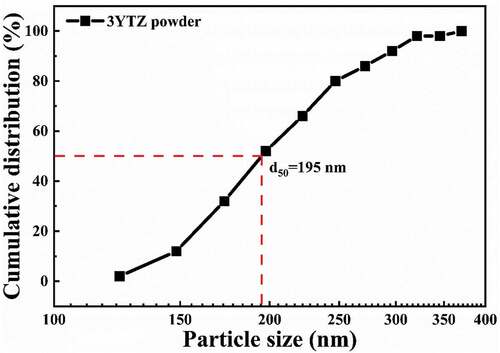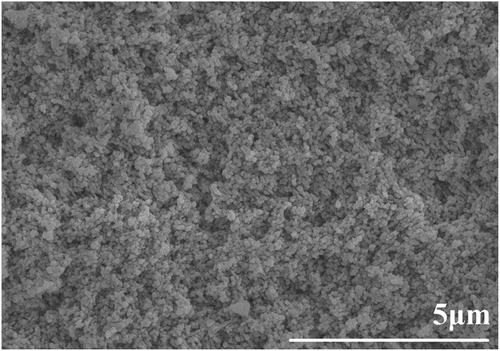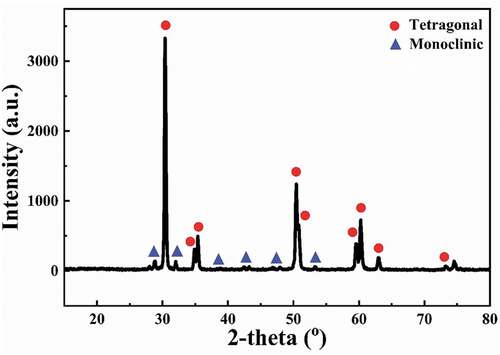Figures & data
Figure 1. Rheological behaviors of the YTZP slurries added with different amounts of dispersants (a) D-821A; (b) CE64.
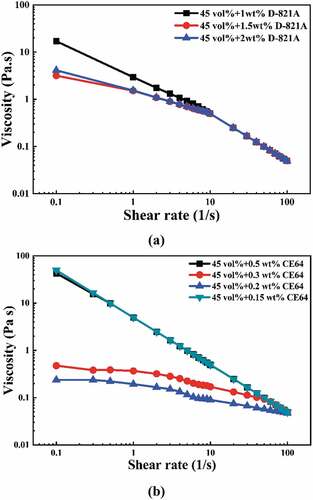
Table 1. Comparison of the slurry viscosity of the result with those reported in the literature.
Figure 3. (a) Effect of the solid content on the rheological behaviors of YTZP slurries with 0.2 wt% CE64; (b) Effect of adding different organic components on the viscosity of the YTZP slurry.
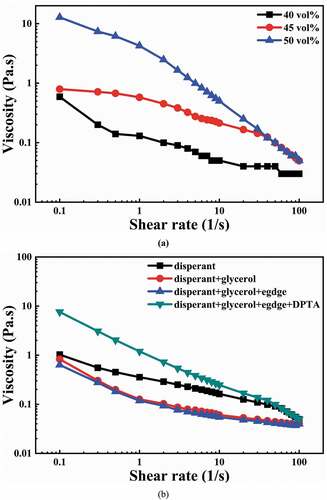
Figure 4. (a) FTIR spectroscopies of the products obtained by mixing EGDGE and DPTA for various reaction time (0 min to 30 min); (b) Effect of CE64 addition on the polymerization rate measured by FTIR spectroscopy; (c) Effect of HQ addition on the polymerization rate measured by FTIR spectroscopy.
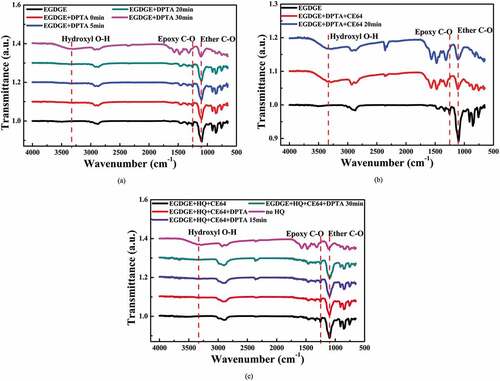
Figure 5. Effects of different curing temperatures and gelation times on the viscosity (at the shear rate of 10s−1) of the slurry with 45 vol% solid content (the mixture of EGDGE, DPTA, HQ, and 0.2 wt% CE64).

Figure 7. Variation of the shrinkage and instantaneous relative density with the temperature for the YTZP green body.
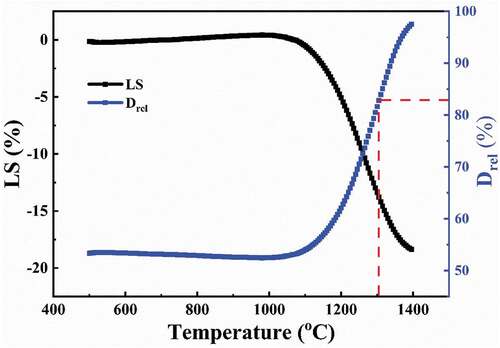
Figure 8. SEM microstructure of the polished surface following thermal etching (1200°C for 30 min) of a two-stage sintered (first stage sintering temperature: 1300°C, second stage sintering temperature: 1240°C for 24 hours) YTZP ceramic.
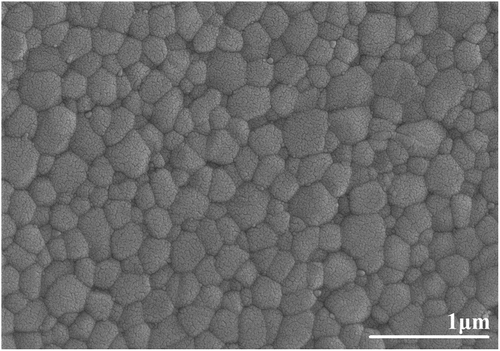
Figure 9. Cumulative grain size distribution of YTZP ceramics after two-stage sintering (first stage sintering temperature:1300°C, the second stage sintering: 1240°C for 24 h).
